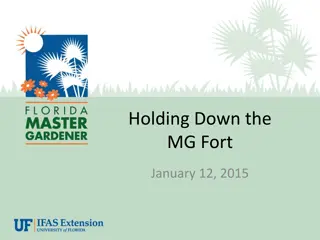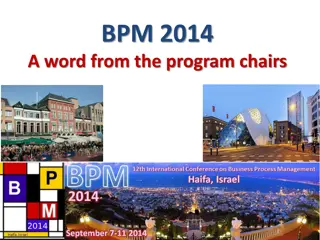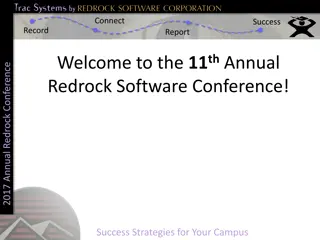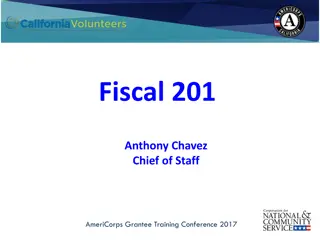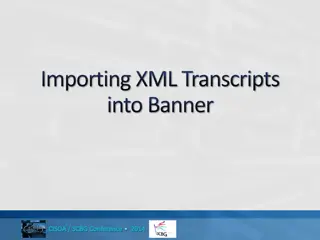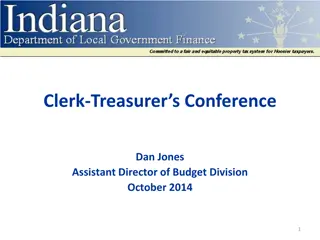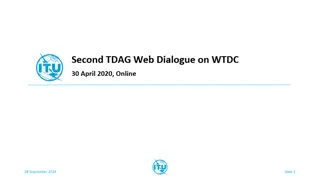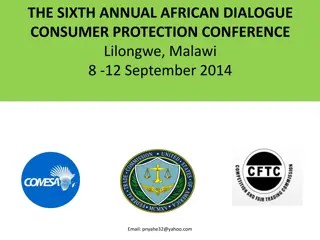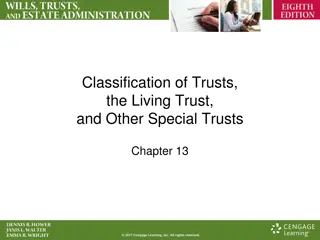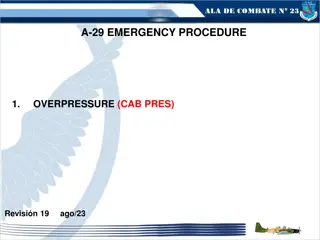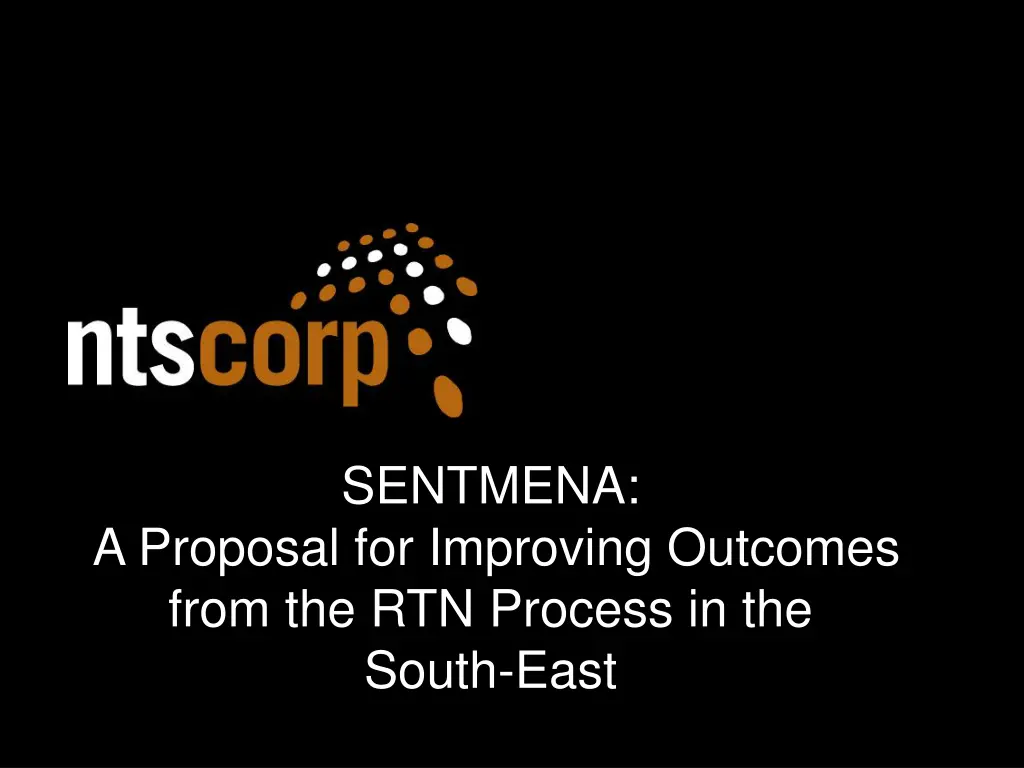
Improving Outcomes from the RTN Process in South-East Australia
Explore the challenges in native title agreements in the South-East region of Australia and how they differ from other parts of the country. Discover the key components of a good agreement and why agreements in the South-East may fall short. Dive into the reasons behind the failures and potential solutions for enhancing outcomes in the region.
Download Presentation

Please find below an Image/Link to download the presentation.
The content on the website is provided AS IS for your information and personal use only. It may not be sold, licensed, or shared on other websites without obtaining consent from the author. If you encounter any issues during the download, it is possible that the publisher has removed the file from their server.
You are allowed to download the files provided on this website for personal or commercial use, subject to the condition that they are used lawfully. All files are the property of their respective owners.
The content on the website is provided AS IS for your information and personal use only. It may not be sold, licensed, or shared on other websites without obtaining consent from the author.
E N D
Presentation Transcript
SENTMENA: A Proposal for Improving Outcomes from the RTN Process in the South-East
South East Native Title Mining & Exploration Negotiation Alliance
What is the problem? Anecdotally at least, there is a huge gulf between native title future act agreements reached in the south-east of Australia and the rest of Australia. Analyses of the agreements are rare they are normally kept confidential. O Fairceallaigh analysis in 2006-2008 of 41 agreements found that the 12 strongest agreements were in the East Kimberley, Northern Territory, Gulf of Carpentaria and Cape York. This is consistent with the anecdotal observations.
How to identify a good agreement? Obviously there are the provisions of the agreement itself: Compensation / financial benefit / royalties or other payments Employment targets and recruitment methods Cultural heritage assessment and protection mechanisms Contacting opportunities and business development Cultural awareness requirements etc. The O Fairceallaigh analysis supports the anecdotal view that such provisions are weaker in agreements in the south-east.
How to identify a good agreement? (cont.) We should also look at the nature of what a good agreement is intended to do: Ensure Traditional Owners get an equitable share of benefits Provide a basis for a mutually beneficial relationship between mine operator and Traditional Owners Grant a social license to operate to the company This is something that cannot really be qualitatively measured. We also need to look at not just the agreement, but implementation of agreements too.
How do agreements in the SE stack up against this standard? It is my belief that agreements in the south-east are further away from this ideal than in the rest of the country, and tend to towards tick-the-box agreements designed for legal compliance with the Native Title Act. They tend to give the impression that Traditional Owners are benefiting and being involved in the development and operation of the mine, but only do this to the minimum extent necessary, and tend to be a matter of appearance over content.
Why do SE agreements fail in comparison? Previously, researchers and practitioners have noted: Less financial and institutional capacity to engage in the negotiation process; and Less political capacity. I would add the following, at least in relation to NSW: Attitude of the industry Failure of government to properly administer and facilitate the future acts regime; and The Native Title Act itself makes it more difficult successfully leverage the RTN in the south-east exacerbates the flaws in a flawed system.
Can we try to rectify this? Some of these causes cannot be addressed by NTRBs at a practical level. Financial and institutional capacity relies on government funding of future act activities of NTRBs. The weaknesses and flaws within the Native Title Act require legislative change. Can work at a policy level to do this, but not at a practical level.
Can we try to rectify this? (cont.) But some of these causes can be addressed if NTRBs work in a collaborative manner. NTRBs could work together to improve their political and media presence, to improve their political capacity to influence both industry and government. Some things that could be worked on collaboratively are putting out media statements, developing standards and guidelines, meeting with industry bodies and government bodies in a united front etc.
Other collaborative activities Share information on resource companies operating in multiple NTRB zones. Sharing negotiation strategies what is working, what isn t. Discussing and exchanging information on expert advisors negotiators, mediators, economists, environmental advisors etc. Sharing information on current and past negotiations, especially trends in agreements, new innovations in agreements and general parameters. Arranging staff secondments. Pooling funds for advices and running test cases.
The SENTMENA proposal A permanent body made up of the south-east NTRBS : NTSCORP, SANTS, NTSV and QSNTS. Quarterly meetings which occur in a structured manner, following a standard agenda. Suggested representation: 1 Facilitation/Liaison Officer who works on future act negotiations; 1 Lawyer who works on future act negotiations; and Manager of the future acts unit (or equivalent). CEOs and relevant financial officer attend one meeting annually.
The SENTMENA proposal (cont.) The standard agenda would include the following: Discussion of trends emerging from recently concluded agreements Request and responses to requests for information on specific proponents or external advisors Proposals and drafting of media releases and strategies Inviting or making arrangements for meeting with industry and government representatives on specific issues Discussion of innovations in negotiation strategies, negotiation facilitation, agreement drafting Proposals and drafting of standards or guidelines for industry and government




